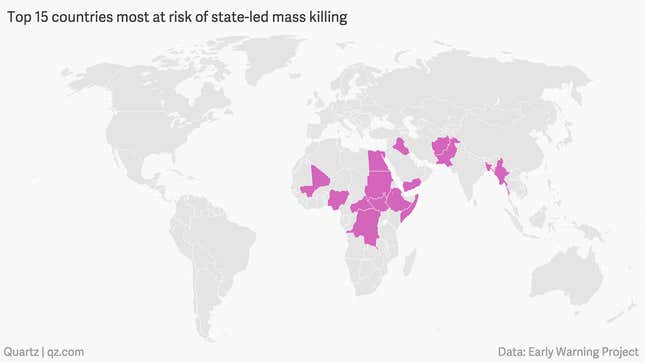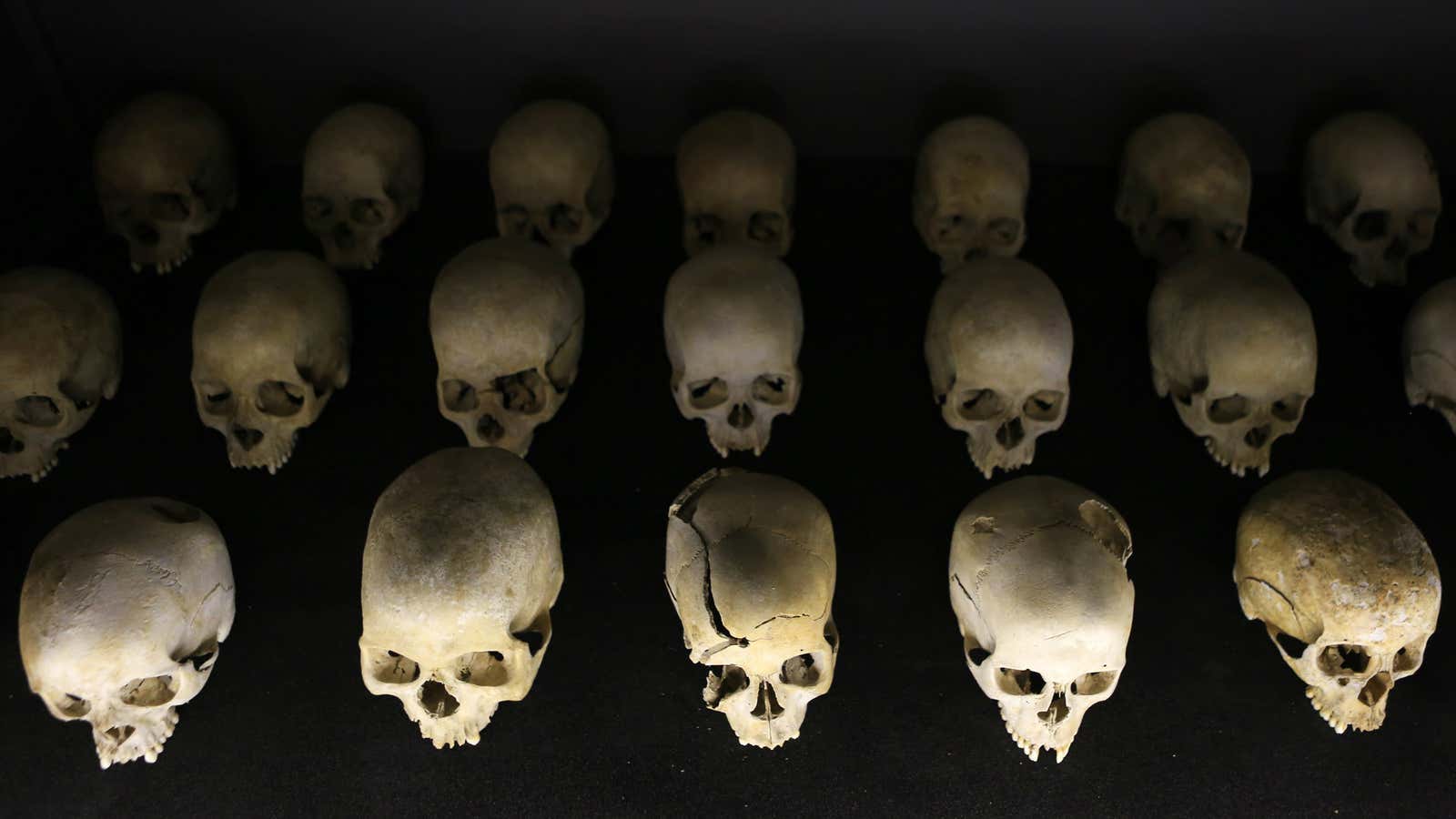There have been a number of shocking, mass killings across the world, but could these atrocities have been avoided with an early warning system? The US Holocaust Memorial Museum seems to think so. It has created a tool called Early Warning Project, which maps countries most at risk of mass atrocities around the world.
It works by combining statistical analysis of sets of data that go back more than 50 years with crowdsourced “opinion pools,” where experts provide more detailed information on perceived risk of genocide. Researchers from the museum’s Simon-Skjodt Center and the Dickey Center for International Understanding at Dartmouth College have been testing the tool for the last two years.
Currently, Myanmar comes out on top, followed by Nigeria, Sudan, Egypt, and Central African Republic. Somalia, Ethiopia, and Iraq round up the top 15. Nine out of the top 15 countries most at risk are in Africa.

Researchers base the need for an early warning system on previous studies that has shown that early intervention is key to preventing mass killings. Without early action, the Genocide Prevention Task Force said “failure is virtually guaranteed” in its 2008 report.
While governments usually have their own similar private list, such as the of CIA’s Political Instability Task Force, researchers describe the tool as “first of its kind public early warning system for mass atrocities.” The “earlier and more reliable warning” could be utilized by advocacy groups, at-risk societies, and policymakers, it said.
